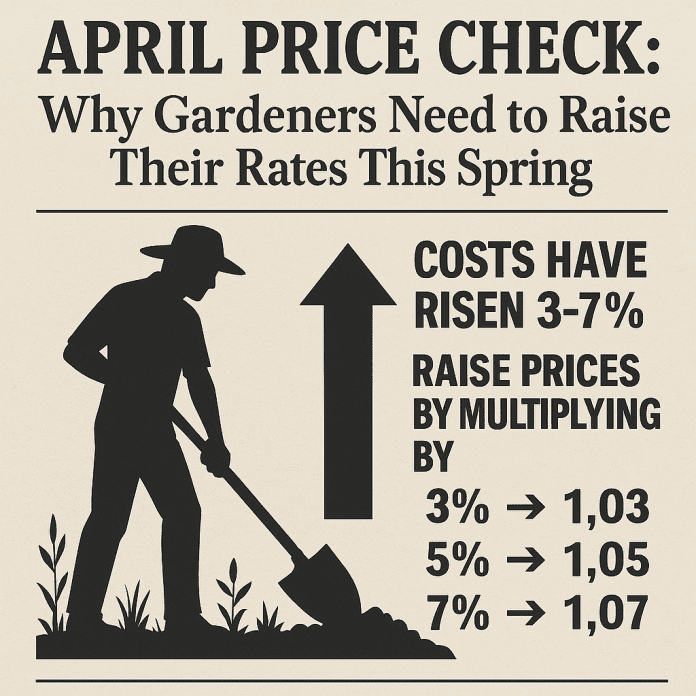As the gardening season kicks off on April 1st, self-employed gardeners and landscapers should take a moment to review their prices. With inflation pushing up the cost of materials, fuel, and insurance, keeping rates the same as last year could mean earning less for the same hard work.
If you haven’t updated your prices in a while, now is the time—before the busiest months of the year begin.
How Much Have Costs Risen?
Inflation isn’t just about the price of groceries. Gardeners face rising costs across the board:
- General inflation (CPIH) has gone up 3.8% in the last year.
- Service-based inflation (SPPI), which includes businesses like gardening, has risen 4.2%.
- Landscaping materials have increased by 5-7%, depending on what you buy.
If you’re not adjusting your rates, you’re effectively giving yourself a pay cut.
How to Adjust Your Prices for Inflation
A simple way to update your rates is by multiplying your old price by 1.05 for a 5% increase. This ensures your earnings keep up with rising costs.
For example, if you charged £100 last year:
- A 5% increase: £100 × 1.05 = £105
- A 4% increase: £100 × 1.04 = £104
- A 3.8% increase: £100 × 1.038 = £103.80
If materials are a big part of your work, a 7% increase might be needed:
- £100 × 1.07 = £107
This calculation works for any price. If your regular mowing job was £40, a 5% increase makes it £42 (40 × 1.05 = 42).
What If You Haven’t Raised Prices in Three Years?
If you haven’t increased your rates since 2021, you’ll need a bigger jump to match those who have been increasing prices annually.
For a 5% yearly increase over three years, your new price should be: Old Price×1.1576\text{Old Price} \times 1.1576
This means you’d need to increase by 15.76% in one step to catch up.
For example, a £100 job from 2021 should now be: 100×1.1576=£115.76100 \times 1.1576 = £115.76
If someone else has been increasing their prices yearly, and you haven’t, you’re now earning 15.76% less than them for the same work.
How Many Customers Can You Afford to Lose?
Some gardeners worry about losing clients when increasing prices, but even with a 5% rise, you can afford to lose 4.76% of your customers and still make the same income.
If you earn the UK median wage of £37,430 per year:
- A 5% price increase raises income to £39,301.50.
- You could lose £1,781.77 worth of work per year and still break even.
- Per month, that’s £148.48 in lost work.
If the average customer spends £500 per year, this means you could afford to lose about 3-4 customers annually without taking a financial hit.
Why April 1st is the Perfect Time to Act
Many businesses and services adjust their prices on April 1st, including council fees, utilities, and trade services. Clients are already expecting price changes at this time of year, making it the ideal moment to update your rates.
By increasing your prices in line with inflation, you’re not overcharging—you’re just making sure you’re still earning the same value for your work.
Talking to Clients About Price Increases
Some gardeners worry about raising prices, but most customers understand that costs are rising for everyone. Here’s how to handle it smoothly:
- Be upfront: Explain that you’re adjusting rates due to inflation and rising costs.
- Keep it professional: A simple message or email works best—no need to apologise.
- Give notice: If possible, tell clients in advance, so they’re not surprised.
Most people accept that businesses need to adjust their prices each year. And if a handful of clients push back? The reality is, keeping unsustainable rates could cost you more in the long run.
Final Thought: Don’t Wait Until It’s Too Late
If you delay raising your prices, you’ll be absorbing the extra costs yourself. April 1st is the perfect time to act.
So before you start your next job, take a moment to check your prices. Multiply by 1.05, update your rates, and make sure your gardening business is still growing strong this year.




